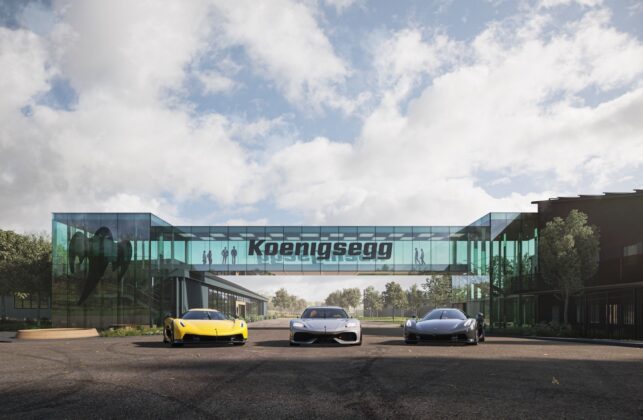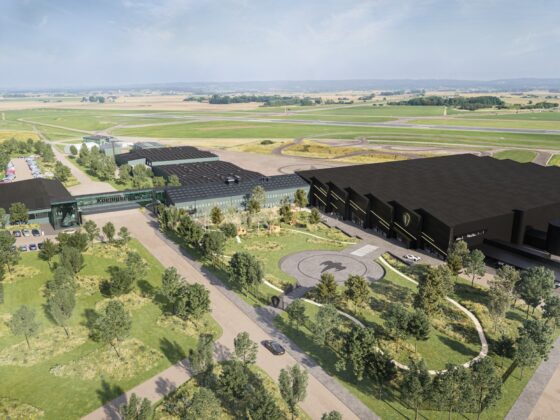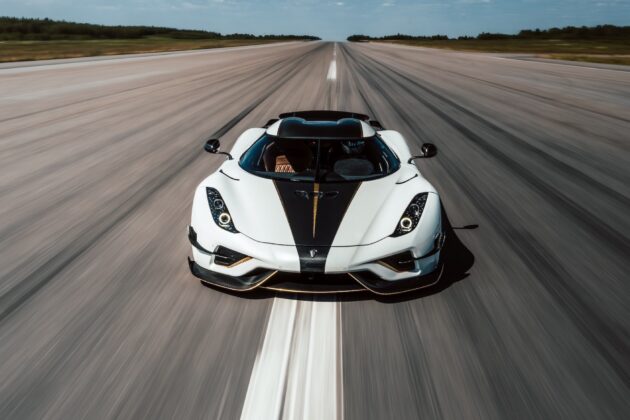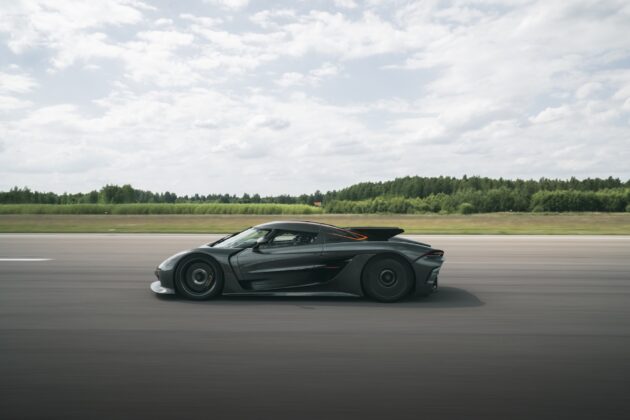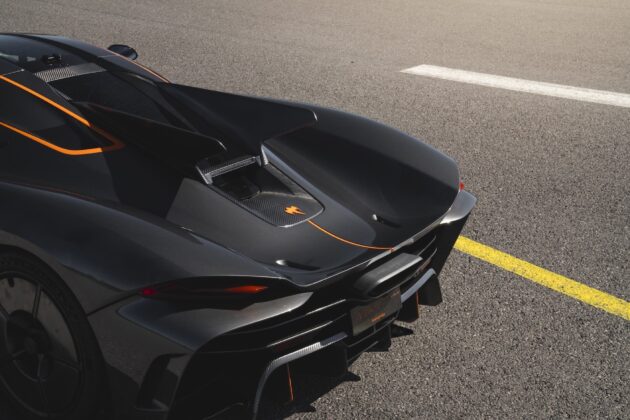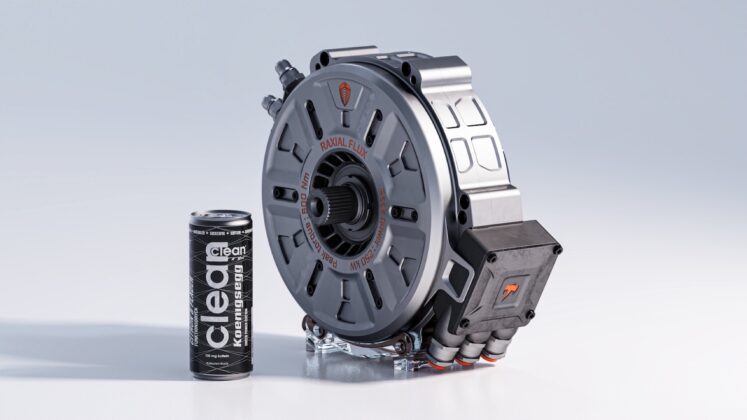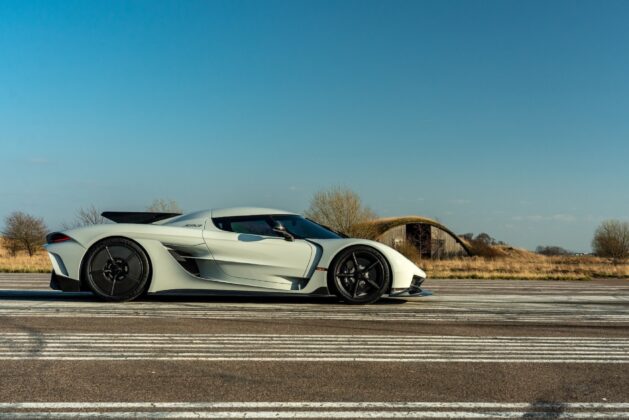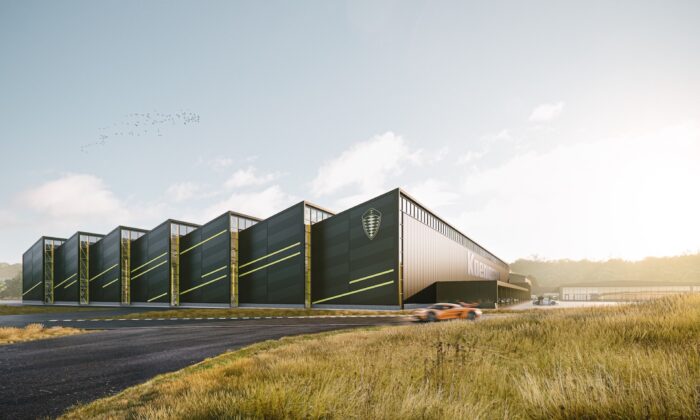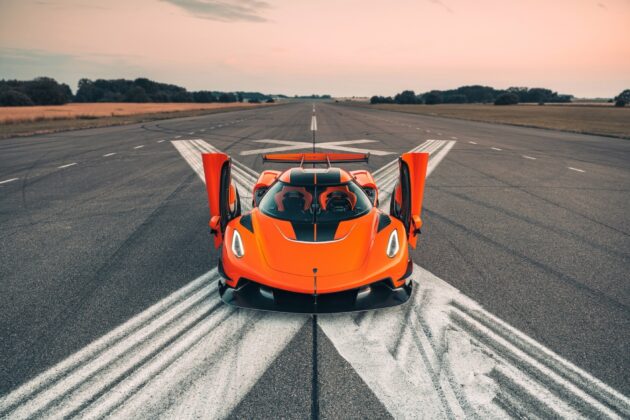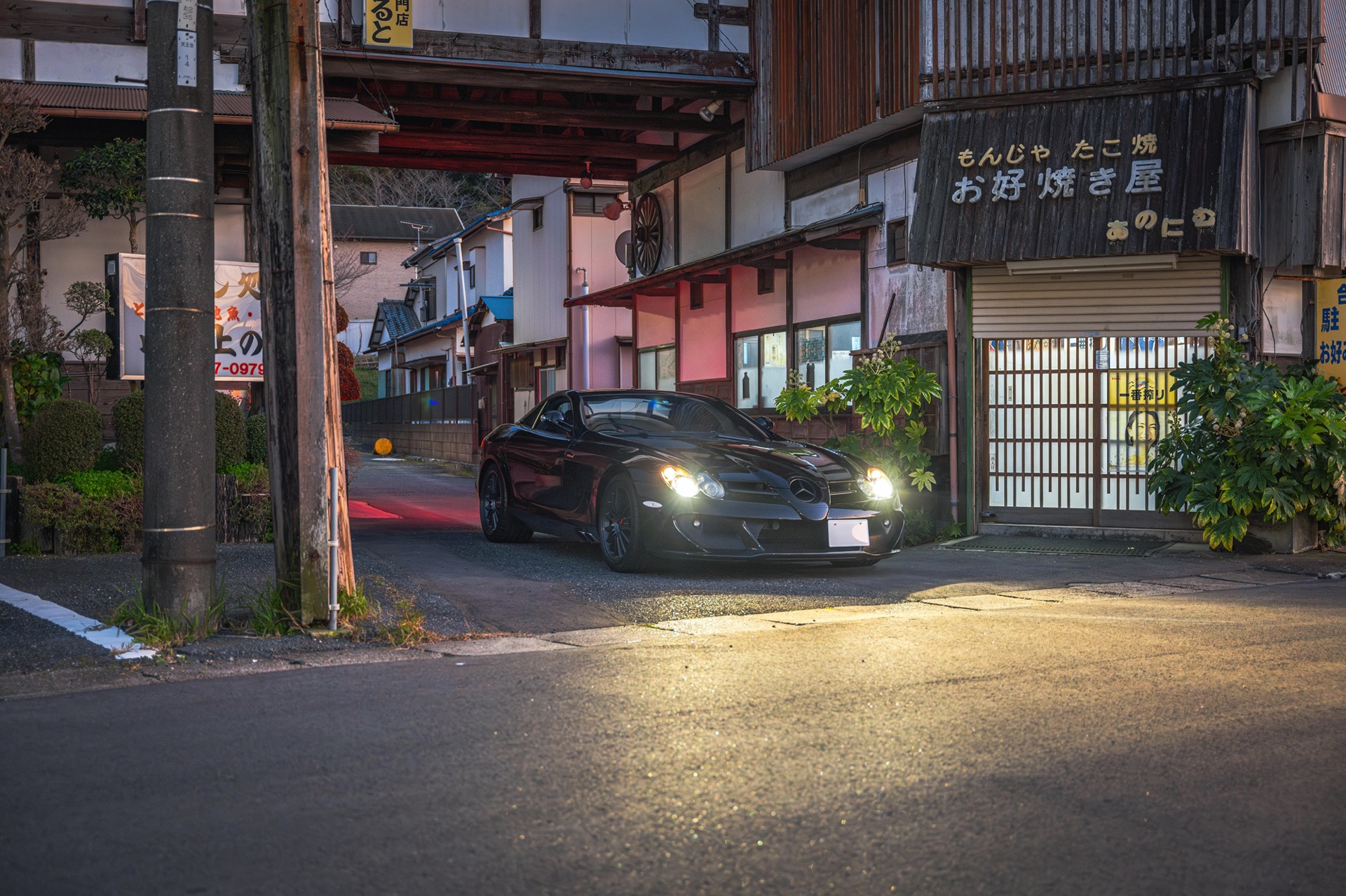Christian von Koenigsegg had a dream. The Swede wanted nothing less than to build the fastest cars in the world. That was 30 years ago – a perfect time to look back briefly and revel in the record speed, as Koenigsegg is also gradually going electric.
No one has heard of Ängelholm in southern Sweden, and the rural region has little to offer that can be described as fast. The houses in the area are often painted dark red, with white window frames, and modern flat buildings in Nordic style are increasingly creeping into the relaxed streetscape of the 30,000-inhabitant town. That some of the fastest cars in the world are built here, just two hours south of Gothenburg, might surprise not only car experts. Regularly, hypersport cars with names like Gemera, Jesko, Regera, or the already legendary CCXR with its 1,018 PS, roar through the gentle field landscapes. They all have one thing in common: they are among the fastest cars in the world.
The Swedes often prefer to drive leisurely, if not slowly, and the penalties for driving too fast are hefty. But Christian von Koenigsegg couldn’t care less about this since childhood, so at the age of just 22, he made his lifelong dream come true in August 1994 by founding his own company: Koenigsegg Automotive AB. In 2000, the first appearance at the Paris Motor Show with the 655 PS Koenigsegg CC8S was followed by the debut of the first production model at the Geneva Motor Show – 806 PS were enough to earn a spot in the Guinness Book of Records. The first speed record then came in 2005 with 387 km/h. Almost as fast as the vehicles themselves, the Swedish small-series manufacturer, now with nearly 800 employees, has become one of the leading hypercar producers with wealthy customers worldwide and numerous Hollywood appearances. The current top model: the 1,691 kW / 2,300 PS / 2,750 Nm Gemera with all-wheel drive, hybrid power (1,500 PS five-litre V8 and 800 PS electric motor), and thanks to its 4.98 metres length, for the first time, space for four people – for more than 1.7 million euros. Market launch mid-2025.
When thinking of fast, really fast vehicles, Porsche, Lamborghini, Ferrari, or even Aston Martin no longer come to mind. Compared to a Koenigsegg, these vehicles are mass-produced, as only a handful of powerful beasts leave the impressive factory on the Valhall site of an old airfield near Ängelholm each year. The logo of these powerful hypercars comes from the Ghost badge, reminiscent of the F10 Air Force Ghost Squadron once stationed there.

Business with the million-euro hypercars is booming, as Koenigsegg plans significant expansion – a state-of-the-art Gemera factory with the latest manufacturing technology, customer lounge, and attached development centre. Overall, the expansion will result in a building area of over 30,000 square metres. Together with the 11,000 square metre second factory in Ängelholm, it clearly indicates where the journey will go in the coming years. To increase volume and capabilities, Koenigsegg not only plans to expand production.
Right next to the Gemera factory, Koenigsegg plans to build its own small race track for extensive testing. “Our expansion is a sign of the relevance of our past and future, in which we aim to deliver state-of-the-art mobility technologies and our handcrafted high-performance automobiles,” says CEO Christian von Koenigsegg, who celebrated his 50th birthday and the 20th anniversary of his vehicle production at Pebble Beach with the Koenigsegg CC850, which was limited to 70 units.

Local council member Robin Holmberg is also pleased: “The continuous development of Koenigsegg in Ängelholm is important and shows that the community is an attractive place for innovative companies. For us Ängelholm residents, it is exciting to be part of the journey and expansion. It means more jobs, new residents from all over the world, and in the long term, the arrival of more innovative companies in our region.” More than sports car tourism, the new experience centre at Valhall Park aims to offer visitors a deep dive into three decades of history with vehicles and technology. Currently, the Koenigsegg Regera holds the acceleration record from 0 to 400 km/h in 28.81 seconds.
Like other hypercar manufacturers, Christian von Koenigsegg can no longer avoid using electric motors. In a first step, the new top model of the Gemera will be impressively hybridised starting next year. For this, a powerful yet compact electric motor – the Quark E – has been specially developed to boost the 1,500 PS V8 turbo engine with 588 kW / 800 PS of electric power to new performance heights. Its combination of radial and axial flux aims to provide one of the best torque-to-power and weight ratios. Dragos-Mihai Postariu, head of electric motor design at Koenigsegg, says: “The Quark was developed to support the low-rev range of the Gemera, where it is needed for brutal acceleration. The combustion engine then focuses on the high-speed range. For the Gemera’s performance, this means a massive power boost, followed by continuous thrust up to 400 km/h without torque or power loss.” Therefore, the next records with electric assistance seem just a matter of time. Here’s to the next 30 years.





